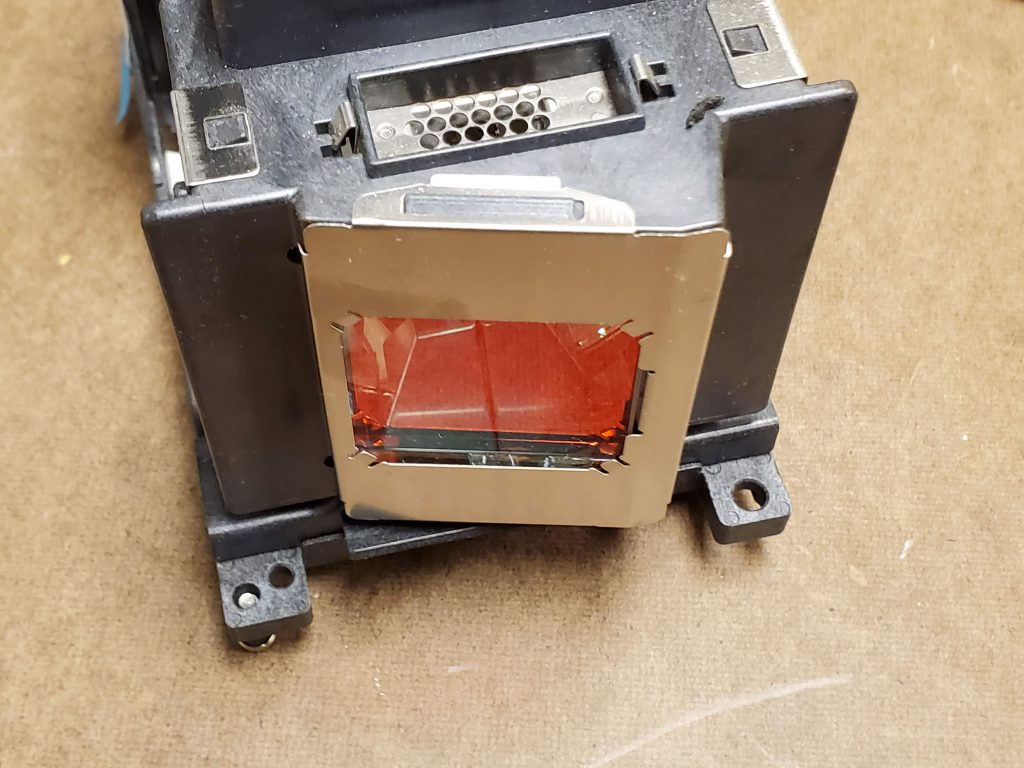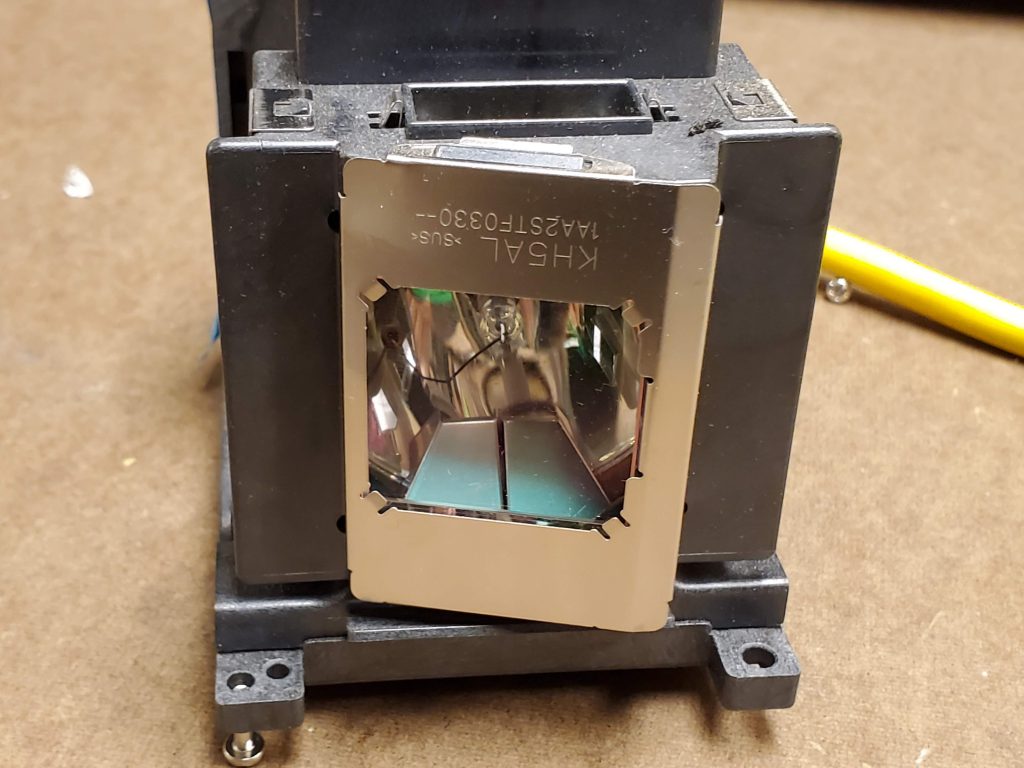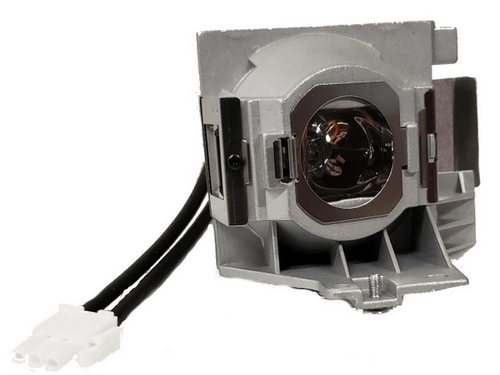Recycling is good for the environment. It keeps trash out of landfills that can be put back into manufacturing. Recycling can lower the cost of raw materials. Most of the time recycling is the answer to many issues affecting our environment.

In one particular case, recycling is a terrible idea.
Recycling Projector lamps.
I do not mean scrapping the Projector lamp down and recycling its components. The glass, the metal, the plastic can all be recycled on it’s own.
I mean when the lamp has the old bulb removed and then a new or still working bulb is installed and then the projector lamp is sold as new or ‘Recycled Housing’.
Projector Lamp housings are made of consumable parts. Even though they do not have many moving parts, they do get subjected to a pretty taxing environment while they are in operation.
The average projector lamp runs at 500f or so inside the bulb reflector. The heat is cooled to a more reasonable temp once it gets to the plastic and the glass, but not too much less. This continues for the entire life of the projector lamp. That means the plastic and glass and metal has been exposed to wide temperature swings for 2,000-10,000 hours(depending on the model).
That amount of temperature swing (room temp up to a few hundred degrees) causes the lamp housing to degrade. On many lamps, there is a coating applied to the lens to protect and block ultraviolet and Infrared light. This coating degrades slowly and unnoticed until it lets too much UV/IR through. Once this occurs, your projector will be cooked from the inside out. In some rare cases, the IR/UV can be so strong it could damage your eyes!
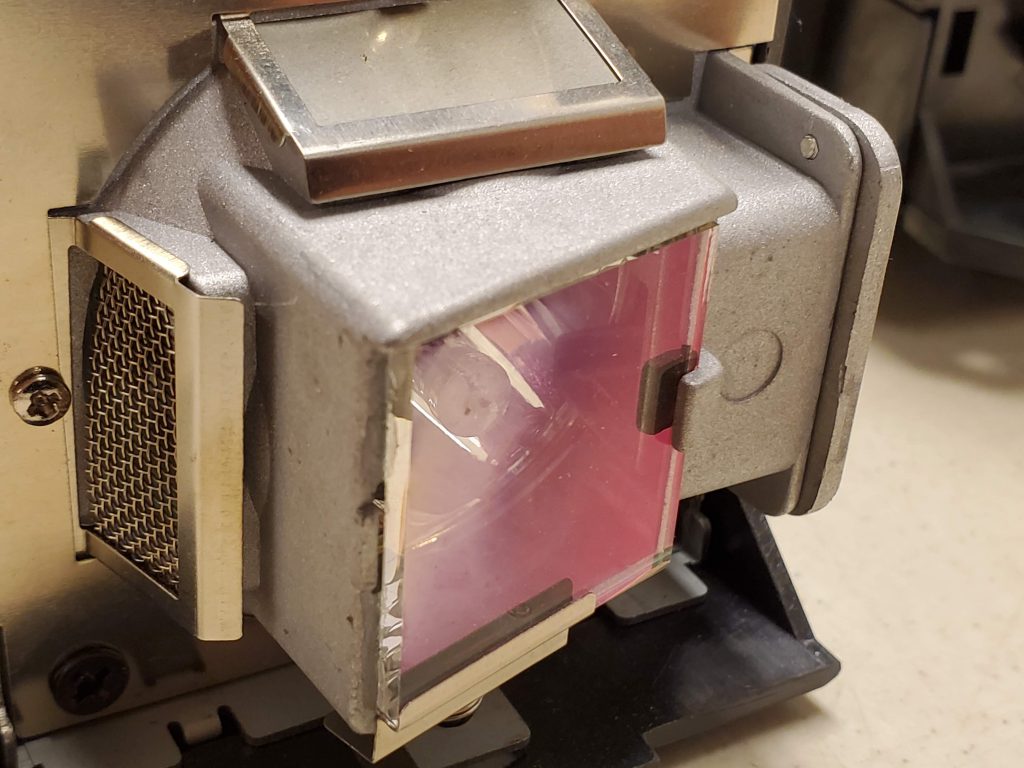
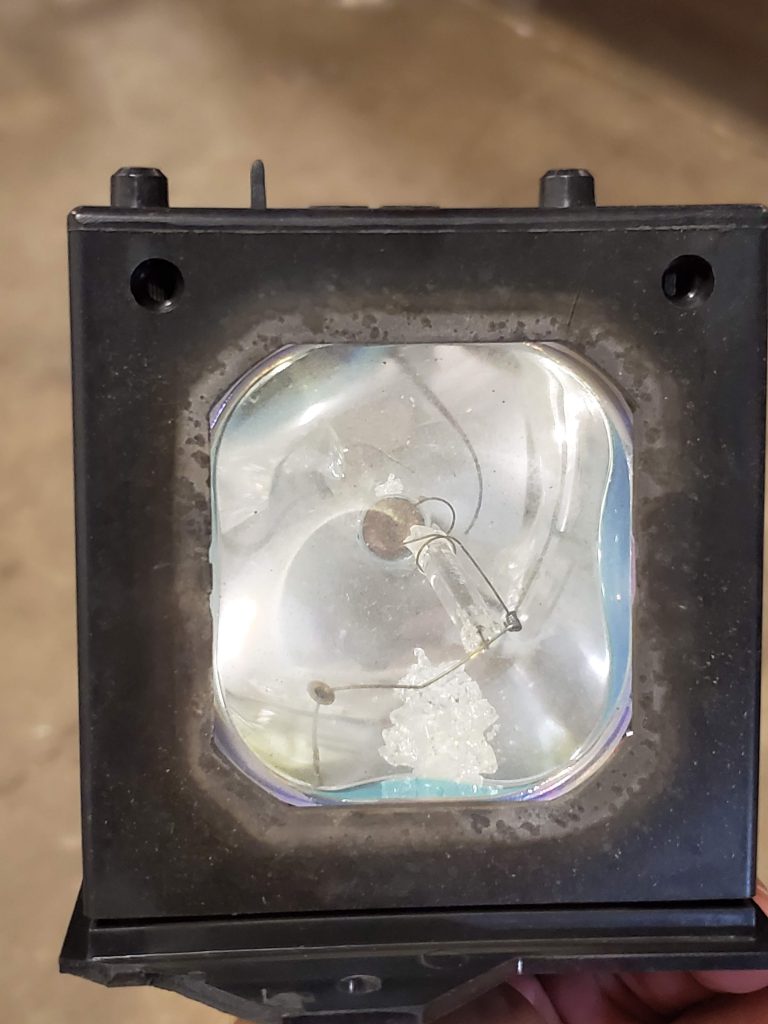
Another problem with re-used/recycled projector lamps is the degradation of the plastic. As the plastic is heated and cooled, the plastic properties begin to change. Projector lamps use glass fiber re-enforced plastic. The glass fibers will begin to ‘float’ to the surface. If you ever notice a ‘gray’ area next to the black in a lamp, that is where the glass fiber has begun to float to the surface. This causes the plastic to become less reliable structure wise. This can lead to a warped housing and the bulb being pointed away from the proper light path and may melt or cause a fire by heating an area that isn’t meant for light. The other issue with old plastic is the cooling air vents may no longer be as effective leading you to need a new lamp well before you should. These usually have short warranties or are a hassle to handle the warranty.
The connector is the most dangerous area of a recycled projector lamp. They connectors handle high voltage and high amperage. The need to be secure and strong. When a lamp gets used for many thousand hours, it will cause the connector to lose some of its flexibility. Then when it is re-installed, one of the metal pins can break loose from the plug and slide out of position without you knowing. This leads to a second arc/spark outside the projector lamp, inside the connector. The lamp connectors will then melt and burn into the TV or projectors connector.
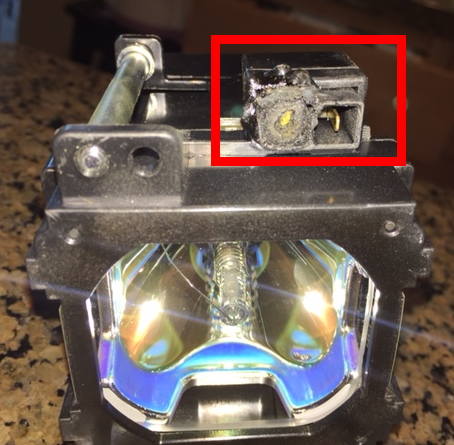
The amount of smoke it releases is impressive. This almost always requires the projector being sent somewhere for repair. The cost of a ballast and labor can be $350-500(or more). Many times, the projector is ruined and not cost effective to repair. This only means that instead of saving landfill space you are now adding a projector and a projector lamp to the trash.
Quite the opposite of recycling…
A smaller yet important issue with using recycled projector lamps is if your model uses one of the many on-board lamp timer modules. They are a small circuit that is built into the lamp. This records the run time and hours used. If the timer is not reset, you will not have a proper run time record and in many cases the projector will shut itself down in protest.
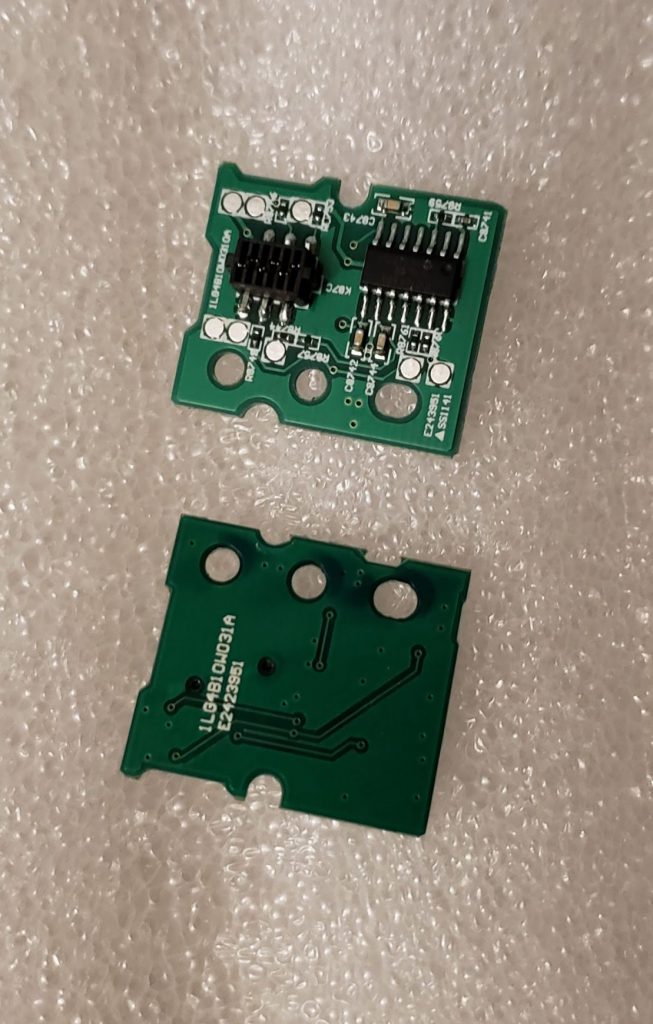
Technically, this is because the projector thinks the lamp is worn out, but I say in protest as it doesn’t want to chance having a lamp explode inside.
Buying a new projector lamp with a genuine original bulb inside will prevent all of these possibilities. The cost savings on a recycled lamp are quickly surpassed by the cost of repair and replacement due to early failure.
A new projector lamp has a properly coated UV/IR cut lens, glass fiber evenly distributed throughout the housing, and a connector with strong connection pins.
A new projector lamp has little to no chance of melting inside your projector and damaging the internals.
If you need a place to safely send your lamps for Proper Recycling, check out https://www.lamprecycle.org/ or contact PurelandSupply.com.
You can ship old projector lamps to us directly and we will properly Recycle them at no charge. I recommend USPS as they are the cheapest shipping option. Refer to our Address info below.
PurelandSupply
co:Recycle
210 Gale Lane
Kennett Square PA, 19348
Don’t take a chance to save a few dollars.
Buy new projector lamps and protect your investment as well as your eyes at Purelandsupply.com

